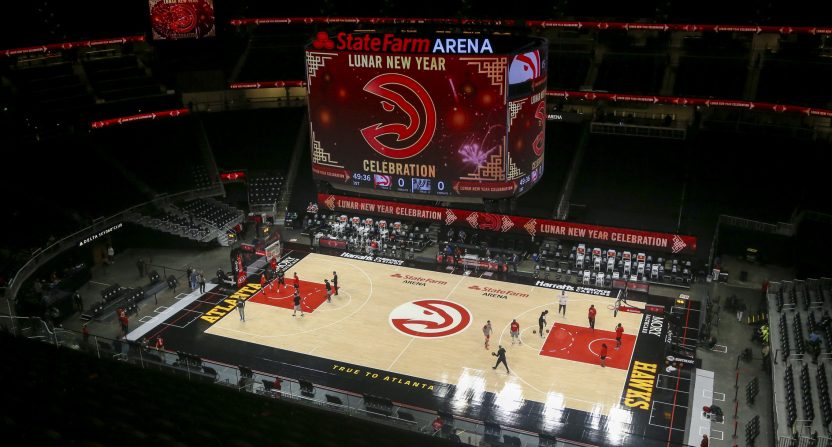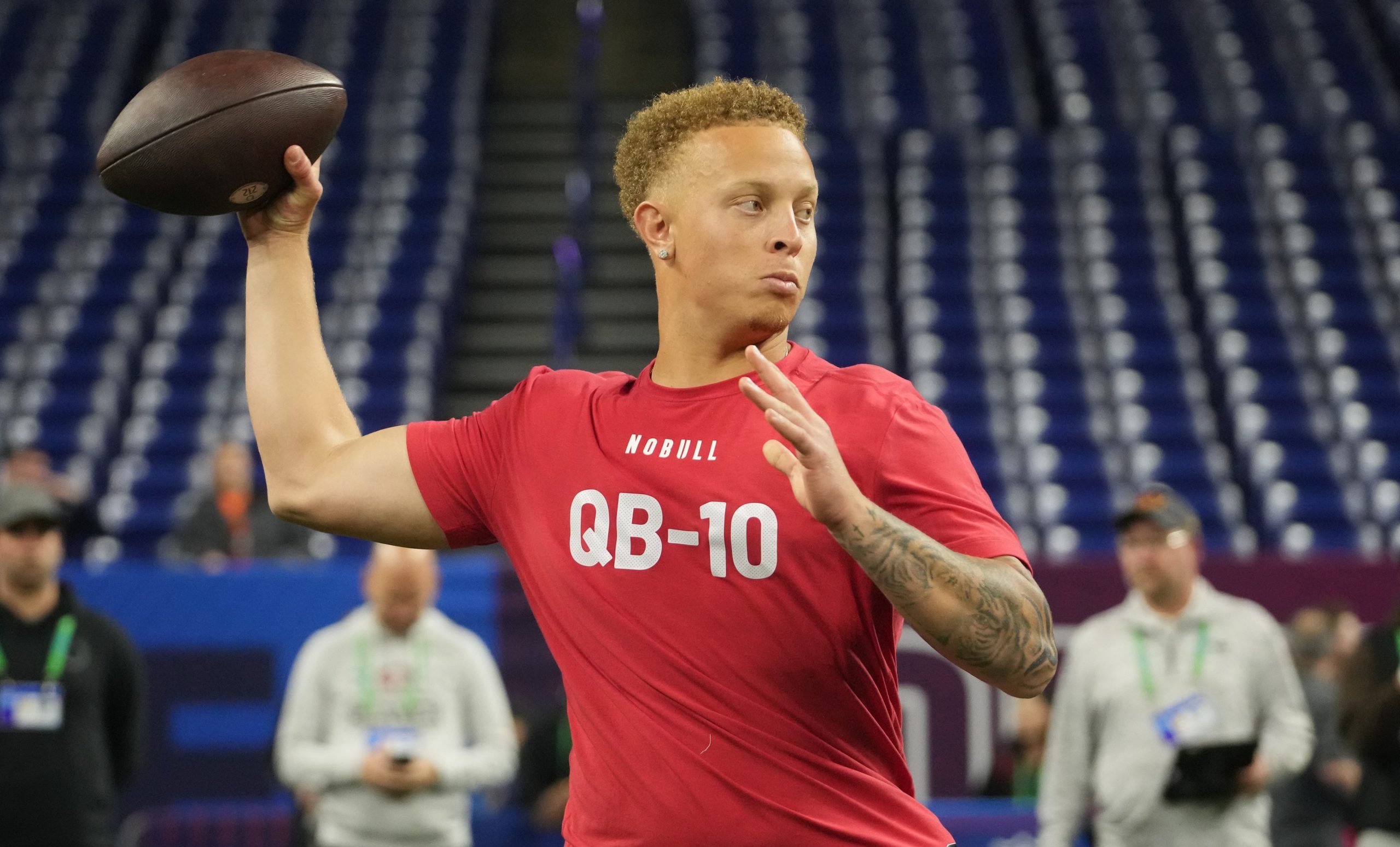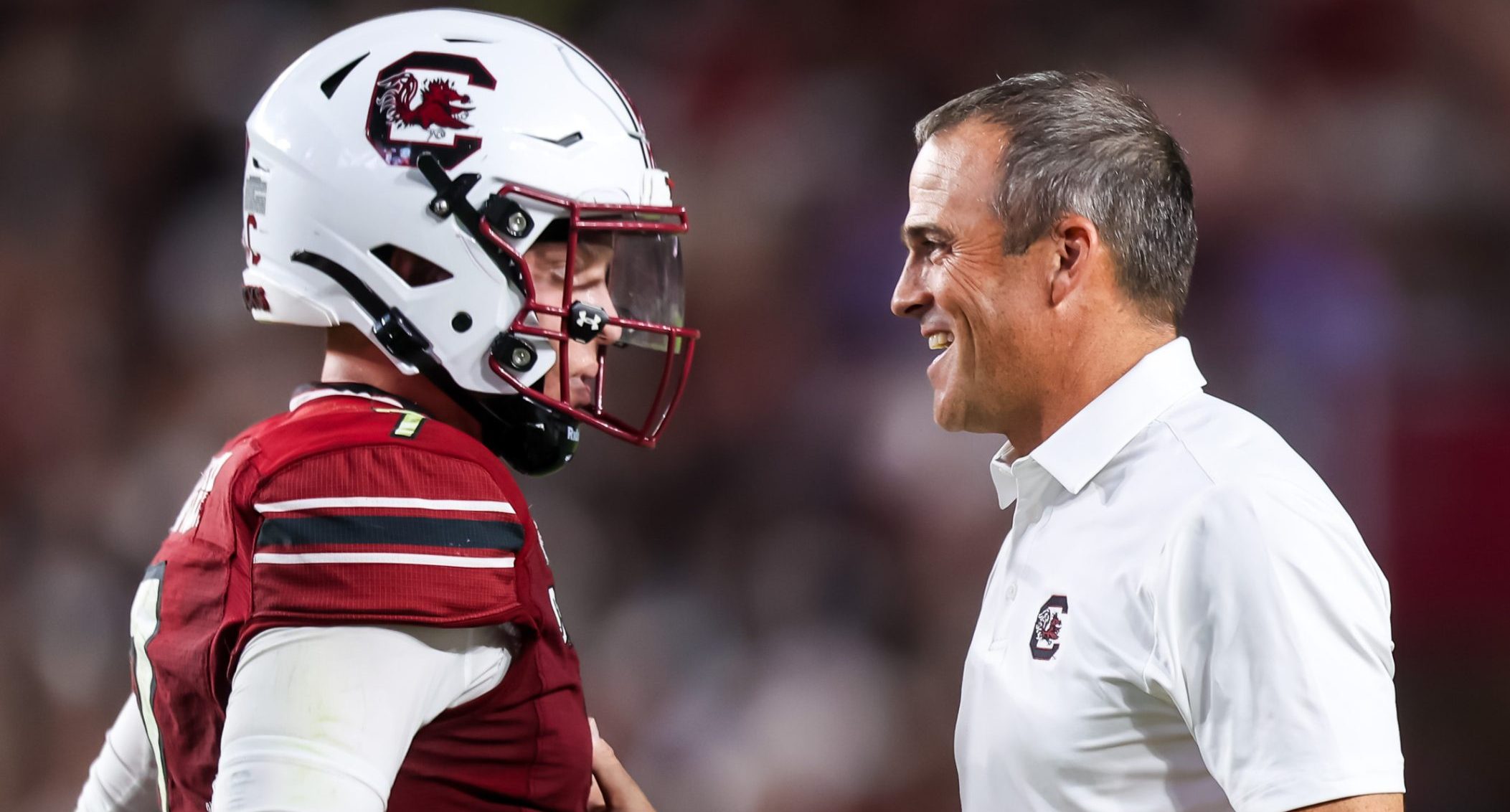As we enter the second half of this unprecedented and strange 2020-2021 NBA season, TV announcers have mainly adapted to their new routines as the league attempts a 72-game season in the age of COVID-19.
Local broadcast crews have been unable to travel, calling road broadcasts from their home arenas or a studio. With necessary restrictions being placed on the number of people players and team staffs can have contact with, announcers are placed in what the NBA calls the “yellow zone” at arenas. That means they can’t directly interact with the players or coaches, including locker room access. Considering more than two dozen games have been postponed this season because of positive tests or contact tracing, perhaps announcers are being done a favor by these restrictions in a twisted sense.
As detailed in a preseason look of how different broadcasting games in the pandemic era would be for Awful Announcing, it was going to be quite the adjustment for crews to put out the high quality televised product fans are so accustomed to watching every day. For our midseason progress report, we spoke with three play-by-play broadcasters and one sideline reporter from our previous post and asked them how things have progressed.
Adapting to change
As broadcasters have lost their courtside seats in the newly designated red zone, they’ve been calling games at the top of their home arenas’ lower bowls, which in most venues is where the radio broadcasts originate from during normal times. As Mark Followill, who calls Dallas Mavericks games for Fox Sports Southwest, points out, road TV crews already normally call games from that position in several NBA arenas, including Los Angeles, Philadelphia, Houston, Washington, and Charlotte.
“We’re not courtside. But that isn’t completely unfamiliar territory,” he said.
From their higher perch, broadcasters have to rely more on monitors, which have quick speeds and low latency according to Pete Pranica, the Memphis Grizzlies play-by-play man for Fox Sports Southeast. He just has to move the monitors around so he can properly see the court during home games. He gets live stats on his iPad using the NBA Courtside app to stay up to date on games regardless of location.
For Bob Rathbun, who’s called Atlanta Hawks games on Fox Sports Southeast since 1996, there’s a video board at State Farm Arena similar to what the NBA had in the Orlando bubble behind the benches that prevents him from seeing the benches, the scorers table, and parts of the sideline and the corners. He’s had to rely on monitors more than he’d like, but he has no complaints on this matter.
Very few teams were hosting fans as the season began, but that’s changing as the COVID vaccines are being rolled out and cities and states around the country loosen coronavirus restrictions at varying speeds. Getting back to loud crowd noises, which we’ll get to, may be an adjustment for some in the second half, perhaps moreso during the postseason.
“Home games have not been an issue,” Pranica said.
Road games & the universal feed
Where broadcasters have had more issues is on the road, when they have to call games off monitors and rely on other teams’ productions.
Local broadcasters from 22 teams had to call games remotely last summer, but everything was happening at one location in Orlando. Each home team is now responsible for a world or universal camera feed that both teams have to use. Away broadcasts get to have control over one or two cameras, usually a hand-held courtside cam that doesn’t have too many broad uses or applications relative to what they’re used to.
Rathbun has found being at the mercy of the world feed quite frustrating at times.
“If our guy on camera doesn’t show what we need to see, then we can’t see it,” he said. “So we’re kind of piecing it together as we go, and it can sometimes make for a disjointed telecast. We know we can do better if we were there.”
The universal feed is not overly specific by design, with camera shots not too tight or wide. But if something happens out of that camera range for road broadcasters, like a technical foul, they can’t see it and have to wait for the situation to become more clear because they’re on site.
“We just can’t see what we wanna see when we wanna see it,” Rathbun said. “And that is the price you pay.”
The home and road broadcast teams are working as best they can to support one another with these universal and road cameras, Followill said, because everyone wants to be treated well when the shots they get in their road broadcast are primarily controlled by someone else. Though he’s not a producer or director in the truck, he said the Mavs TV side hasn’t encountered a time where they’ve asked for a shot on the road and haven’t gotten it.
“Trying to integrate a world feed to make it a Grizzlies-centric feed can be a challenge because sometimes you don’t know when the cuts are going to come,” Pranica said. “So we’ve had games where our director’s cut to a shot, and the camera person to whom he cut decided to whip pan to something else. There are going to be issues like that.”
Technical difficulties
Naturally when you’re trying to broadcast games remotely from hundreds, if not thousands, of miles away, there are going to be technical issues in audio and video that broadcasters and viewers will encounter. These situations have been most noticeable on local or national broadcasts where the audio is either ahead of or behind the video, creating a disorienting, frustrating or off-putting experience for fans at home.
Though Followill said this hasn’t happened during any of his Dallas broadcasts to date, he’s seen it occur while watching League Pass games at home. But more often than not, the delays occur on national broadcasts like on TNT, where every game has been called remotely this season.
“Their play calls seem like it’s about a half a second behind what’s actually happening on TV,” he said.
Followill specifically mentioned the Feb. 23 game between Dallas and Boston, when Ian Eagle’s call of Luka Doncic’s game-winning three with 0.1 seconds left was just a little noticeably off.
“For us, that’s another thing we’ve been very fortunate that it just has not been anything that has been problematic,” Followill added.
Rathbun hasn’t been as lucky. He’s not sure what causes these issues because there’s no real pattern as to when or why they happen on the road. But with so many things having to go right, delays in audio or video were probably inevitable, he said.
“We’ve had situations where we could see the game clock hit zero at the end of a quarter and the clock on our scoreboard bug is two seconds behind,” Rathbun said, though this thankfully hasn’t happened when a game result was on the line.
Early on in the season, Memphis had a road game in Minnesota. And all of a sudden during the game, the natural audio just died.
“So Brevin [Knight] and I are calling the game and there is no sound other than our own voices,” Pranica said, “which was really, really weird and kind of hard to do.”
He’s noticed that sometimes the lip sync isn’t always there on some games he’s watched, but nothing along these lines that have impacted Pranica calling a game. But what does cause Memphis’ TV voice problems is just the sheer amount of noise in NBA arenas, even when fans aren’t present. This is a pet peeve of many of his colleagues, he said.
“The audio in arenas is just too bloody loud to begin with,” Pranica said. “And now when you maybe have 1,000 people in the building and it’s at ear-splitting levels, c’mon guys, really?”
ESPN sideline reporter Cassidy Hubbarth usually wears an earpiece at games to hear from producers or her broadcast colleagues, which is so much more important this season because she’s often the only on-air talent at the arena. But arenas have gotten so loud even without fans that she’s oped to wear a headset instead at times. And when arenas without fans have the PA announcer and piped in noise ratcheted all the way up, she said that the sound can echo or bounce off places, causing hearing from remote or on-site technical staffers to be even more difficult.
“It can be overwhelming,” she said. “Sometimes the producer, the director, the play-by-play and the analyst get drowned out. Our staff has done so much to make sure we’re getting everything that we need.”
Whenever Followill feels distracted by the noise, he’ll tell an A1 or another audio engineer to change the sound levels in his ear in some way to where he’s comfortable. Trying to call a game while listening to producers is difficult enough, but then factoring in crowd noise, the PA announcer and artificial noise can quickly become overwhelming to those uninitiated. But even for a seasoned veteran like Pranica, he’s recently switched to using a headset setup like a rock musician would.
“Our NBA arenas have gotten so insanely loud that if I wanna hear the producer, director and the program feed coming back to me, I need something that blocks out everything that goes on in the arena,” he said. “Your hearing is so precious and you can’t get it back. So I’m trying to preserve it as much as I can.”
Lonely journeys
While TNT hasn’t sent any of its broadcasters to game sites this season aside from All-Star weekend in its home base of Atlanta, ESPN has sent its full crews to its ABC Saturday night prime time broadcasts. But for the most part, sideline reporters like Hubbarth are the only on-air talent to be in-person at most of the telecasts, with other talent working remotely and games mainly produced from the network’s headquarters in either Bristol or Charlotte.
She’s mainly had to travel to game sites alone instead of with her co-workers, while having to navigate the various arena logistics and health and safety protocols. While still in regular communication with her colleagues, Hubbarth misses the team bonding element a lot, calling it a lonely experience to what she’s used to with production meetings, dinners and creating memories on the road.
“Whenever I’m on a game with Doris [Burke], I’m texting with her through the game on certain points,” Hubbarth said. “I always send my stories to the play-by-play and analyst so they just know when they get into a conversation that I have something to add. It’s just different when you’re by yourself, though I have some people there on the production side.”
Things have also been tough for Hubbarth and everyone else as a sideline reporter who isn’t allowed to physically be on the sideline. She usually does stand-ups or SportsCenter hits from her seat at the arena, which is where she also has to conduct split-screen interviews with players and coaches. In part because there are far fewer production staffers on site, ESPN gave Hubbarth what’s called a lipstick camera, a kind of handheld mini camera, to use at games. She also had this in the bubble, and thinks it could become a permanent element in a post-COVID world because of how easy it is to use.
“It may not always be the best looking shot, but it’s certainly convenient,” she said. “It’s been a really good addition for me, trying to figure out how to work with little resources.”
But because of the sheer distance between herself and the players, they’re just not as engaged during interviews because they don’t even know who’s talking to them, Hubbarth said. They’ll just hear a voice and go through the motions. Some players have given good answers, but it doesn’t compare to normal times when you can just grab a player for a couple of minutes or even in the bubble when she was on the floor from a safe distance.
“There’s certainly something to the players seeing who’s there reporting, who’s calling the game, feeling that type of coverage that the national broadcasts bring to the stage,” Hubbarth said. “When you put on the headset, it just feels different. Now PR teams do a great job, but there’s some element of waiting.”
A COVID scare
In mid-January, the son of Pranica’s Grizzlies analyst Brevin Knight tested positive for COVID-19, which definitely put a scare into he and the rest of the Fox Sports Southeast crew. While Knight missed two games, Pranica and sideline reporter Rob Fischer didn’t miss any time because they’ve been tested on a regular basis. All season, the Grizzlies medical staff has made the same red zone safety and care available to the broadcast team, which Pranica has certainly appreciated.
Pranica actually participated in a double-blind Johnson & Johnson clinical trial at Memphis’ St. Jude hospital and found out the day he received his first Pfizer shot that he had previously received the J&J vaccine as well.
“We’re just all very careful,” he said, adding that Knight’s son has fully recovered. “I don’t remember the last time I saw my producer [laughs]. We don’t see anybody from the truck.”
Pranica has also been extra careful because earlier in the year, the crew lost lead replay operator Michael “Speedy” Edwards to COVID-19. Edwards spent 13 years with the Grizzlies broadcast crew, making the four-hour drive each way from the Tuscaloosa area to Memphis for games or a team charter flight. When they travel on the road, it’s just the talent, producer, director, graphics, and a replay operator like Edwards.
“It was devastating,” Pranica said, to lose someone so close to them. “He was well known within the industry for being a really good operator and a great guy. So we were all very cognizant of the impact that COVID can have in that while yes, 99% of people survive but there are circumstances where obviously it can take a life.”
The Fox Sports app he uses for work requires Pranica to fill out a health screening before being able to check into games, which has been helpful. Nobody was going into restaurants or in social situations and would get tested any chance they could. The normal three-man pre and post-game setup was reduced to two with Knight working from the broadcast booth with Fischer and Chris Vernon from the in-arena studio.
The regular testing and safety procedure has become the norm for everyone involved in the game, and so has broadcasters from teams not being able to see each other or the players and coaches whose games they call. So much of what these announcers do is reliant on interactive relationships with these people who they now can’t have access to. Everyone has had to rely on Zooms, assistant coaches and even broadcasters from other teams to get the latest intel and info in order to enhance their respective telecasts.
“We’re all sad about that, because we’re the conduit to the fans,” Rathbun said “We’re normally there on the plane, in the hotel, in the locker room and they’re not. And they rely on us for that. And we can’t deliver on that end of it. So that we miss. And that’s been as hurtful to us personally as anything technically that we’ve gone through.”
Looking forward
While the first half of the season has mainly been calling games every other day and adjusting to a new normal, there’s some light beginning to glimmer through at the end of the tunnel for the league’s broadcasters and fans. More fans are coming to games as the U.S. ramps up its vaccination process. Rathbun is hopeful that local broadcasters will be able to travel for the playoffs in May and June as the country slowly but surely regains normalcy.
But whether it’s in a few months or when the 2021-2022 season begins, we’re all going to remember how much everyone had to endure and adapt to make sure the NBA was being played and televised to fans around the world.
For Hubbarth, help is on the way even sooner than that. More ESPN play-by-play announcers and analysts will join reporters on-site for March and going forward, she said. And even though there won’t be group meals together quite yet, just being around together after Zoom meetings with coaches is something she’s very much looking forward to.
“I almost forget how loud it can be with fans,” Hubbarth said. “It’s gonna feel good to get closer to the norm. I think we’re gonna feel like we can breathe again, even if it is under a mask.”







